Something you don’t often see credited in desktop 3D printing is the quality with which a printer moves. You can tell which companies have put an iota of thought into this with the subtle quality a printer flings its print head about. It’d be a projection to say they move with confidence, but, well, they do.
The Prusa XL is one such printer. The XL’s toolchanging mechanism is so satisfying to watch, and putting a full bank of five toolheads through its paces elicits scalp-massager-like levels of satisfaction at the back of our dumb cavemen minds. The locking mechanism, with its reassuring click-clack snap of a latch, provides a mechanical soundtrack like no other printer.
You don’t spend $3,499 on a 3D printer to sit there dumbstruck as it dances about its work, though, so we wrested ourselves free from its trance to test its multi-material abilities.
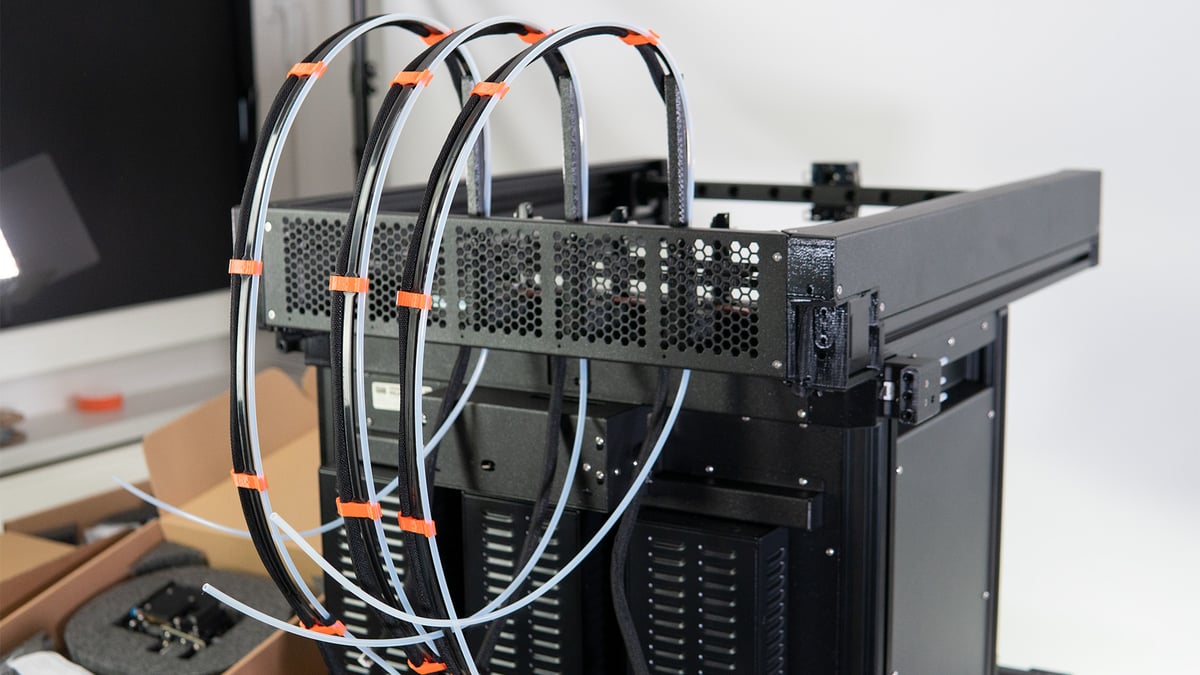
What is the Prusa XL?
The Prusa XL is Prusa Research’s answer to several questions left unanswered by the company’s i3 and Mini series of machines. At its most basic level, it is a 360 x 360 x 360 mm build volume CoreXY 3D printer with a toolchanger system. It promises larger-scale 3D printing and, thanks to said toolchanger, truly versatile material options in your prints.
But what’s a toolchanger, you may ask? It’s a concept familiar in heavier industries where automation is more prevalent. A toolchanger is a tool head mounting system that allows the end effector – or “tool head” – of a system (here, the printhead carriage) to autonomously switch between multiple tools as prescribed by the job. In 3D printing, and the Prusa XL’s case in particular, it offers efficiency and versatility to multi-material printing that can’t be matched by other setups, with independent hotends for each material and no limitation on each as an individual unit.
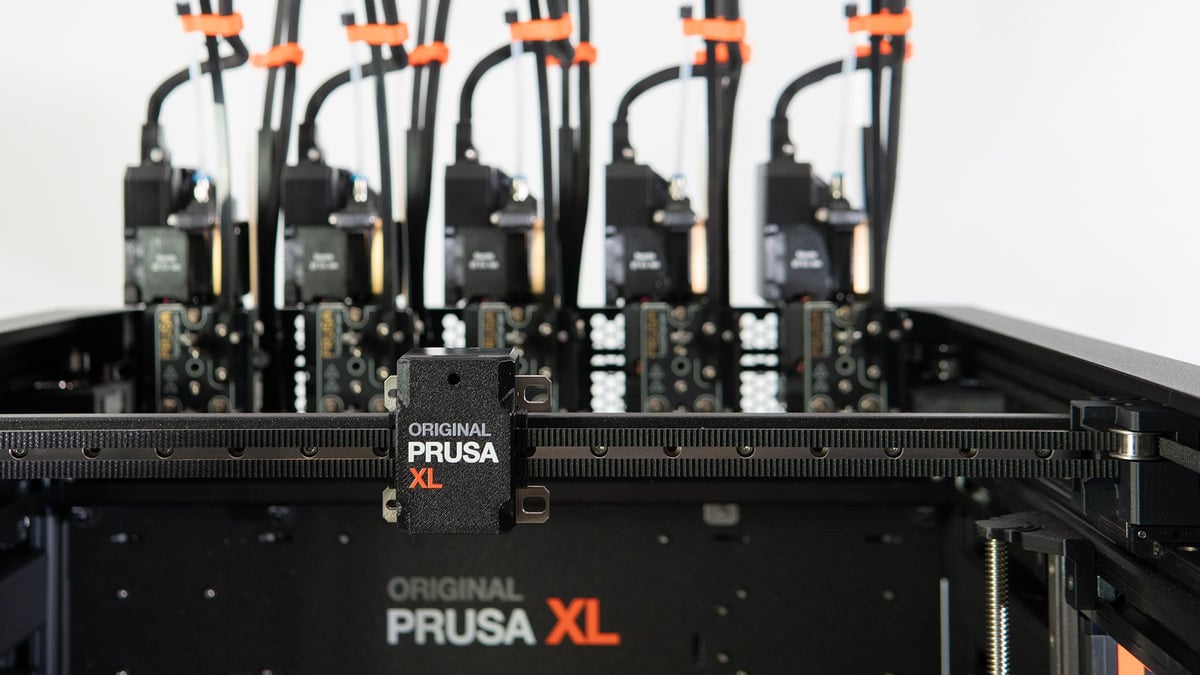
Starting at $1,999 for a single-toolhead, semi-assembled version that you part-build yourself, the Prusa XL can be later upgraded to dual- and five-toolhead versions. The full five-toolhead conf iguration starts at $3,499. This jumps to $3,999 for the Prusa XL to be delivered pre-assembled, as we tested. Though, bear in mind that “assembled” here still requires some fiddly steps, including mounting the toolchanger docks and cabling to the control boards.
Each of the XL’s five toolheads is a full independent extrusion system packing Prusa’s Nextruder (which we cover in great detail in our Nextruder deep dive). The standard toolheads come equipped with 0.4 mm brass nozzles, which can be switched out for any V6-style nozzle you may have knocking around (using the V6 nozzle adapter, provided), Nextruder nozzles with other bore sizes, or the recently released ObXidian nozzles from Prusa’s collab with E3D (not provided).
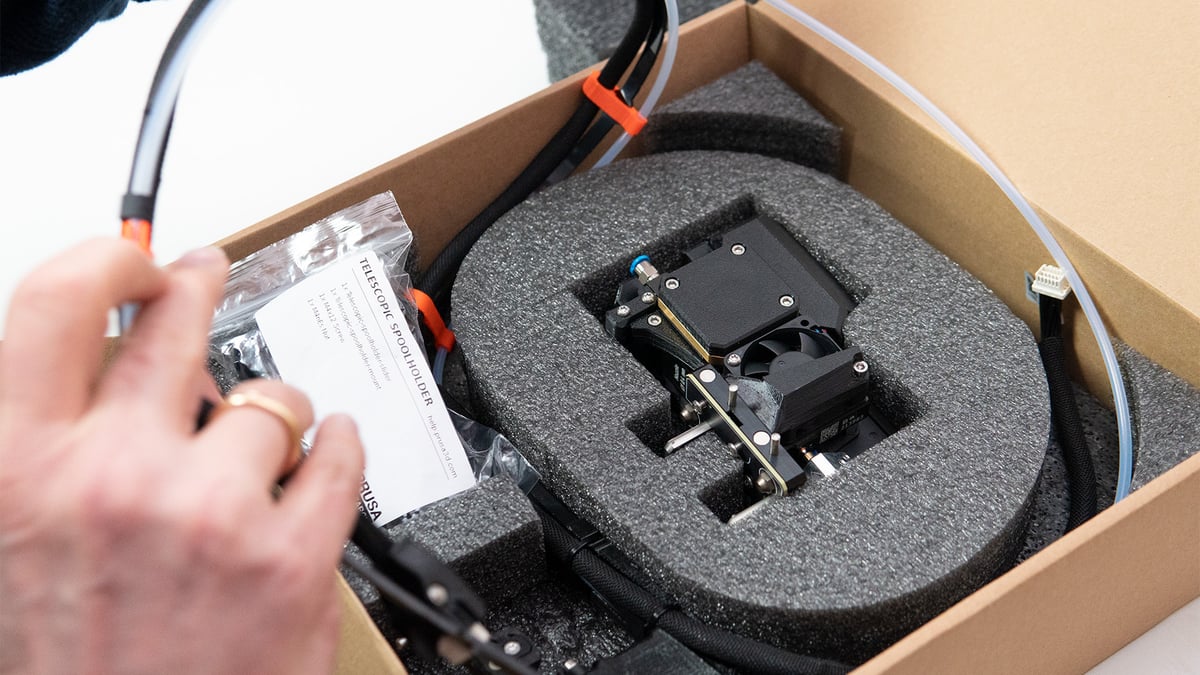
We’ve been getting to know a fully assembled five-toolhead XL, and the experience has been largely positive but far from flawless. The setup is subject to a few more steps than we think a fully “assembled” label warrants. However, this is minor gripe when you consider the clear instructions and helpful tools and tips given to you for the process.
There’s even a full handbook to getting started with 3D printing, above-average tools, an XL bag of Haribo gummy bears (we see what they did there), and scant packing foam in sight. In fact, the XL’s smart use of packaging means it is almost wholly recyclable, adding yet another notch to the already lengthy list of means by which Prusa Research’s products are that little bit extra.
“Expert” Printer
We’ll frontload this piece with our main issue with the Prusa XL – which, on balance, isn’t so major, just disappointing. We expected the user experience between the machine and slicer to be more… connected. Simpler, and less finicky than it currently is, at least. Prusa Research has told us that the XL is an “expert” machine; hence many of the XL-specific settings are buried in the “expert” view in PrusaSlicer. If the rise of competent simple, plug-and-play machines over the last couple of years has taught us anything, it’s that experts want simplicity, too.
Using a material-specific support interface layer (an advantage the XL offers) is a curious thing, available through a “soluble” printing profile alongside others for speed, detail and strength. It is not wholly clear what you’re sacrificing by opting for the soluble support configuration, but it seems a little at odds with the loose quality indication the other profiles suggest to you.
It feels like PrusaSlicer hasn’t sufficiently evolved to meet the versatility of the XL. To further illustrate the point, the printer can’t tell your slicer what materials are loaded, despite knowing the kind it has in each of the five toolheads. You can’t even check via PrusaConnect, the company’s web browser-based control platform, which oozes telemetry data but can’t give you an at-a-glance overview of the loaded materials.

Forgivingly, the printer lets you remap the selected filaments on a job-by-job basis should you mess this aspect up, but that can only be done on the printer itself. Sending such a print remotely via PrusaSlicer won’t alert you to the issue, although a generic warning will show in PrusaConnect (if you happen to have it open) telling you to go check the printer’s display. The dots are all there, they’re just not fully connected.
Preparing a print for a printer other than the XL in PrusaSlicer – not uncommon, given the software’s popularity for general-purpose slicing with other brands’ printers – and then jumping back to the XL loses the chosen filaments, leaving you to select them all over again. It’s tedious, and something a quick sync between the machine and slicer would smooth over in a huge way. For a networkable system with five times the variables, the software and link between all components could do a little more to make your life easier (expert or not).
How Versatile is it?
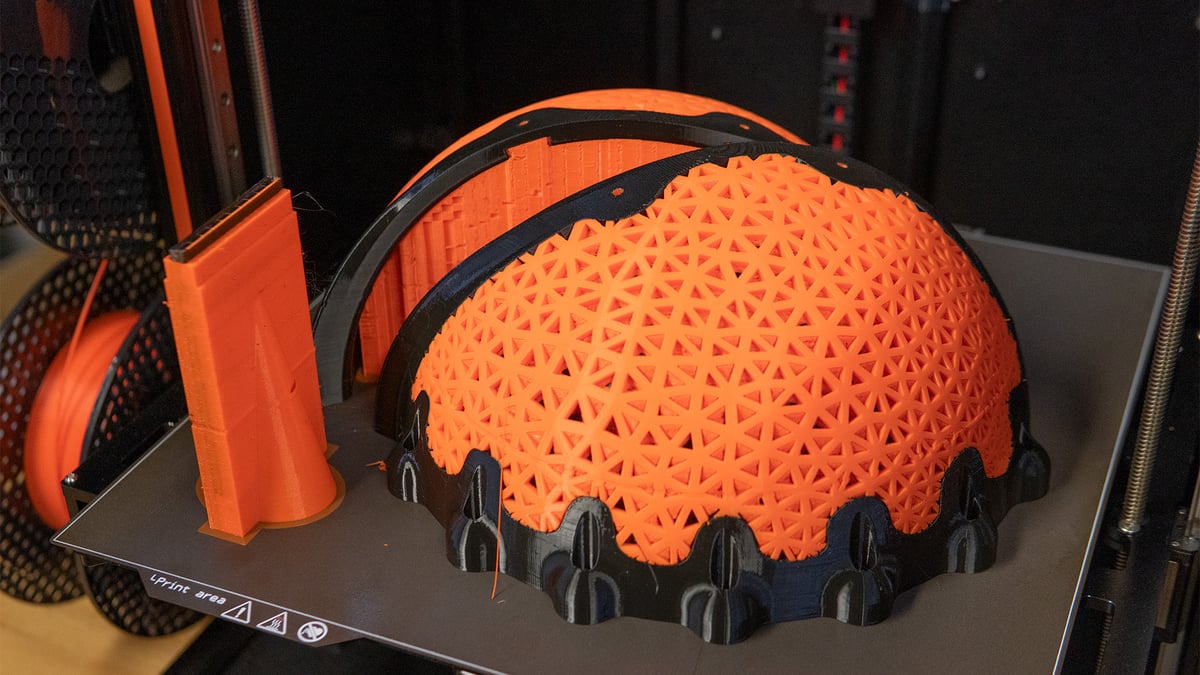
A simple question with a simple answer – very! Prusa will be keen to point out that its system can print with less purge waste than other multi-material systems. In our experience using it (akin to a consumer, for personal use and projects) the XL’s superpower really is in its ability to mix and match materials. Importantly, including flexibles. It sounds innocuous enough, but flexibles unlock all kinds of possibilities in your printing, including hinges, custom gaskets, and impact resistance, to name but a few.
Each toolhead is its own Nextruder, meaning the only real limit on material choice in your prints is the materials’ abilities to stick to one another, and how exactly that plays out in your print.
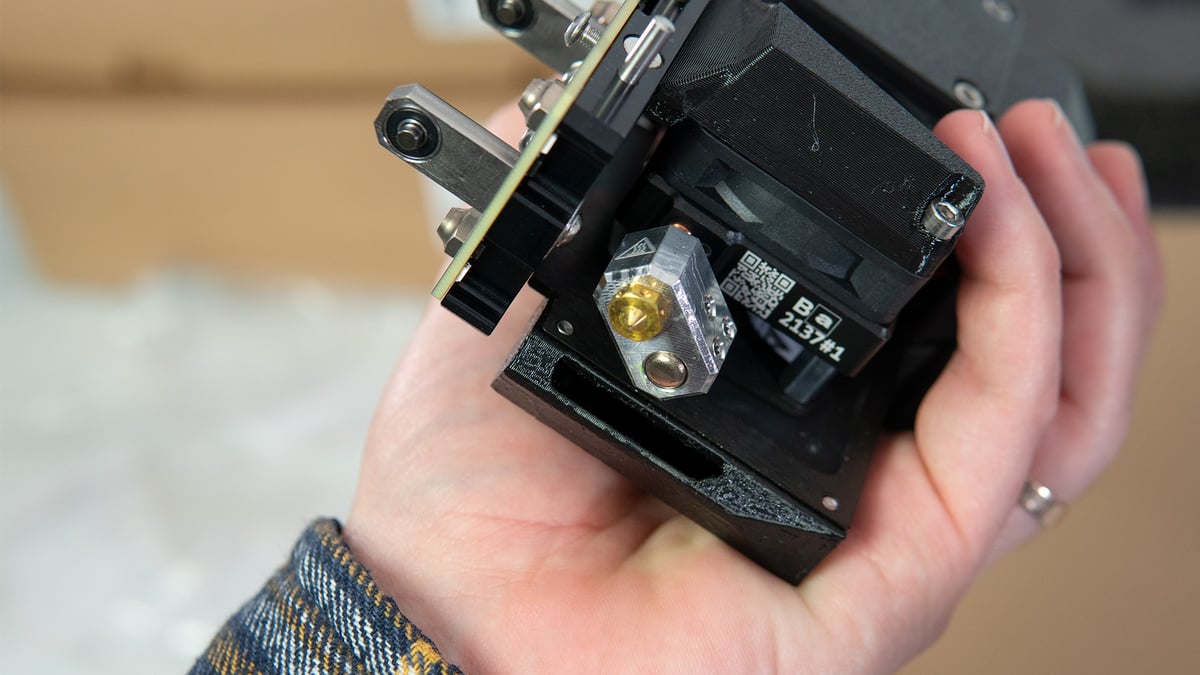
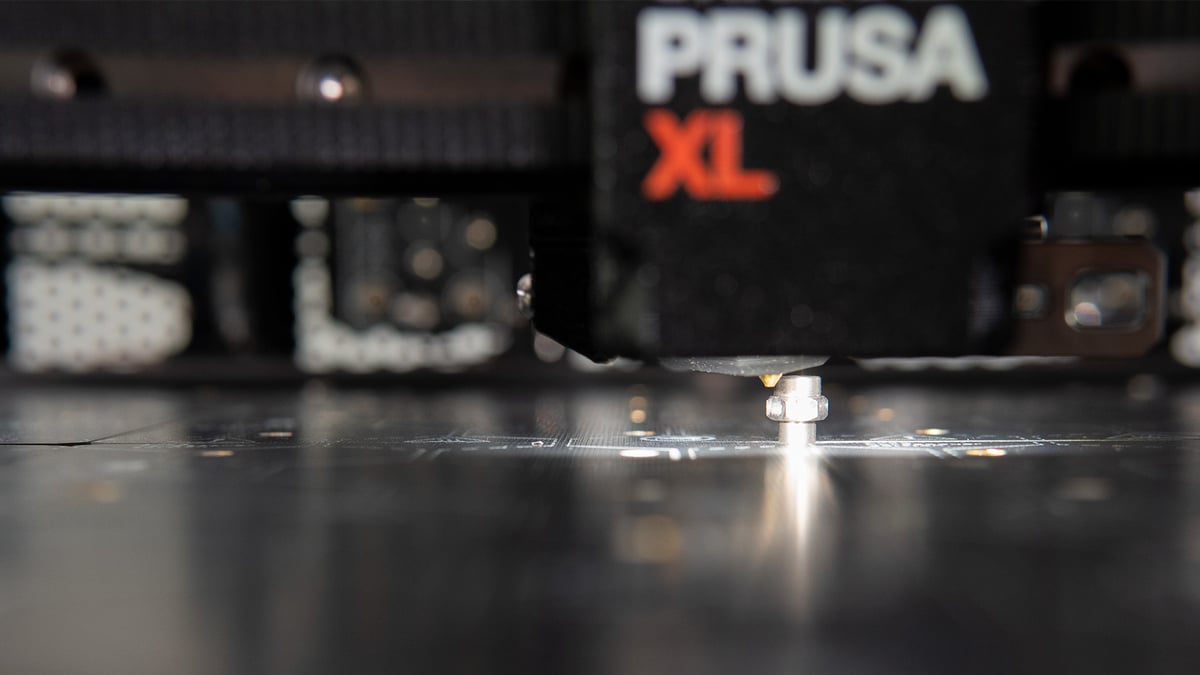
Out of the gate, Prusa includes a selection of test models to demonstrate the XL’s versatility. A print-in-place box using three different filaments puts multiple colors of PETG and an embedded flexible gasket onto the build plate in a little under five hours. Meanwhile, a CT model of the bones inside the hand shows a tricky print of floating parts from PLA, connected by flexible tendons and supported entirely by a second color of PLA.
Having multiple unconstrained toolheads at your disposal means you can attempt more ambitious prints and also find cost savings by reserving one tool for inexpensive support material, for example.
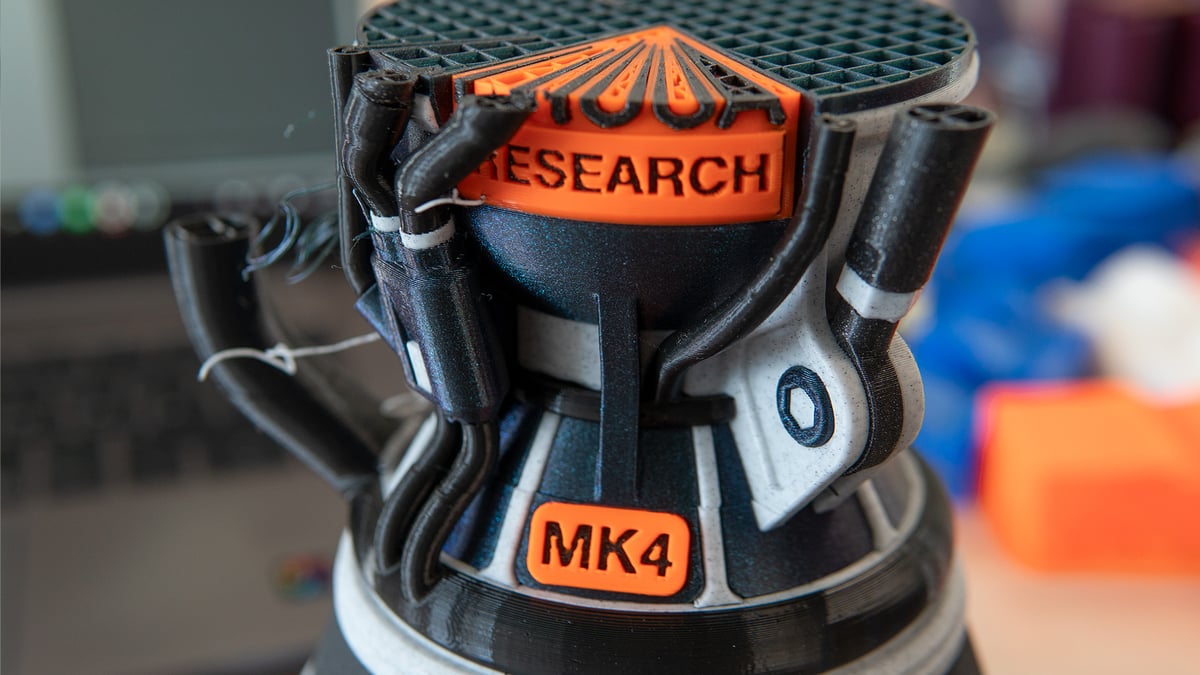
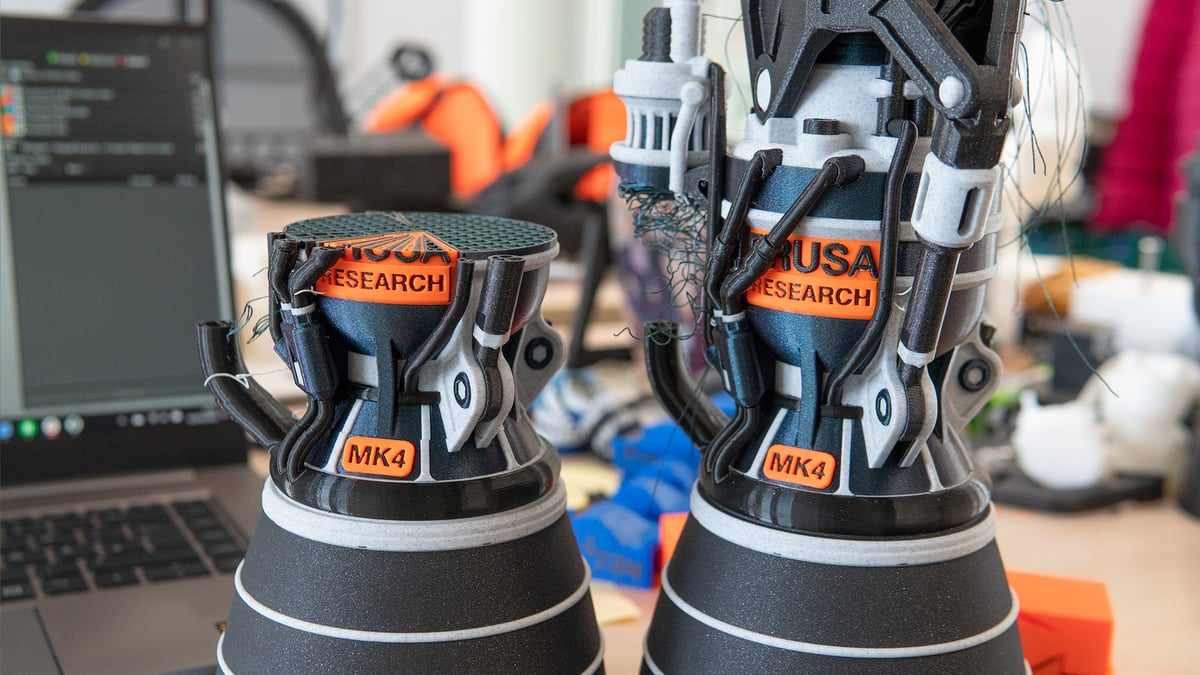
We experimented with combinations of PLA and flex for visual appeal and toughness, and the two played well together. You can use PLA supports with PETG prints (and vice versa) for easier support removal – a combo that’s particularly useful in models with difficult-to-reach recesses that require support structures.
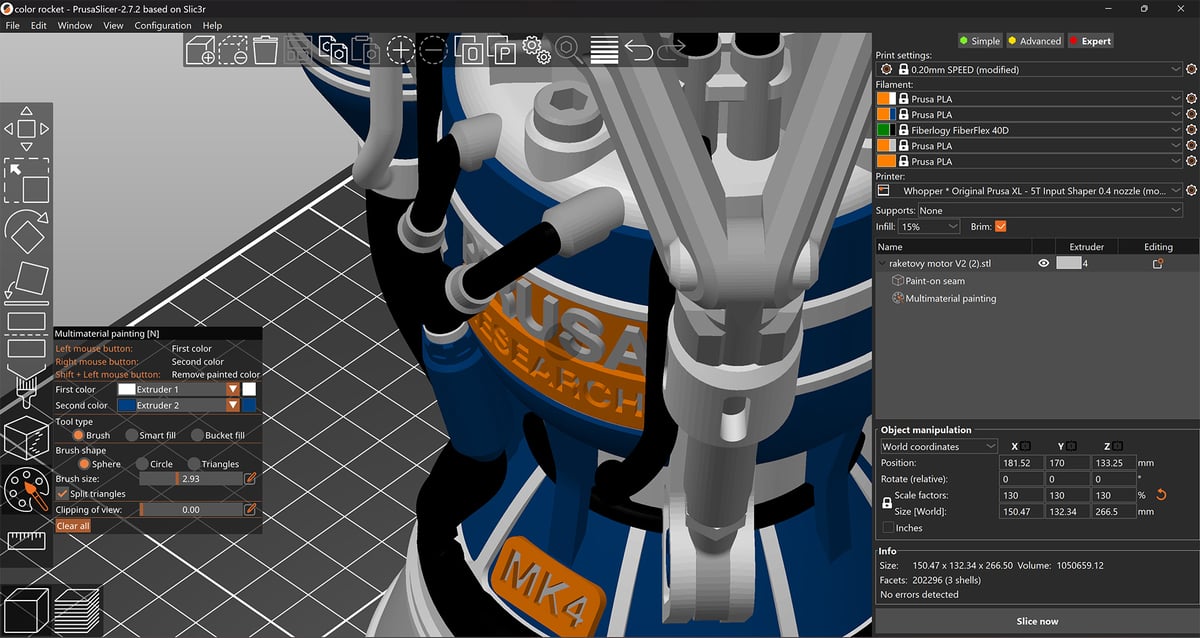
Using the controls for “painting” color selections onto a model in PrusaSlicer is comfortable enough, with enough variety in the application (full model fill, sectional fill, individual triangles from the mesh, and even a freeform brush) to help you quickly realize a multicolor print. Pushing this feature hard, we painted Prusa Research’s model rocket engine with four colors of PLA and flexible filament for the pipes that snake around the model. It’s a great example of adding tactility, in addition to color on a model. Similar effects can be achieved by combining glossy, silky, and matte filaments or transparent materials for visual depth in the model.
None of our two attempts at this ambitious rocket worked out, unfortunately, with both failing at the same point (a seemingly uniform stretch of flexible pipe with PLA on top), leading us to believe there’s a particular quirk in the design when printed like this that trips the multi-material aspect over.
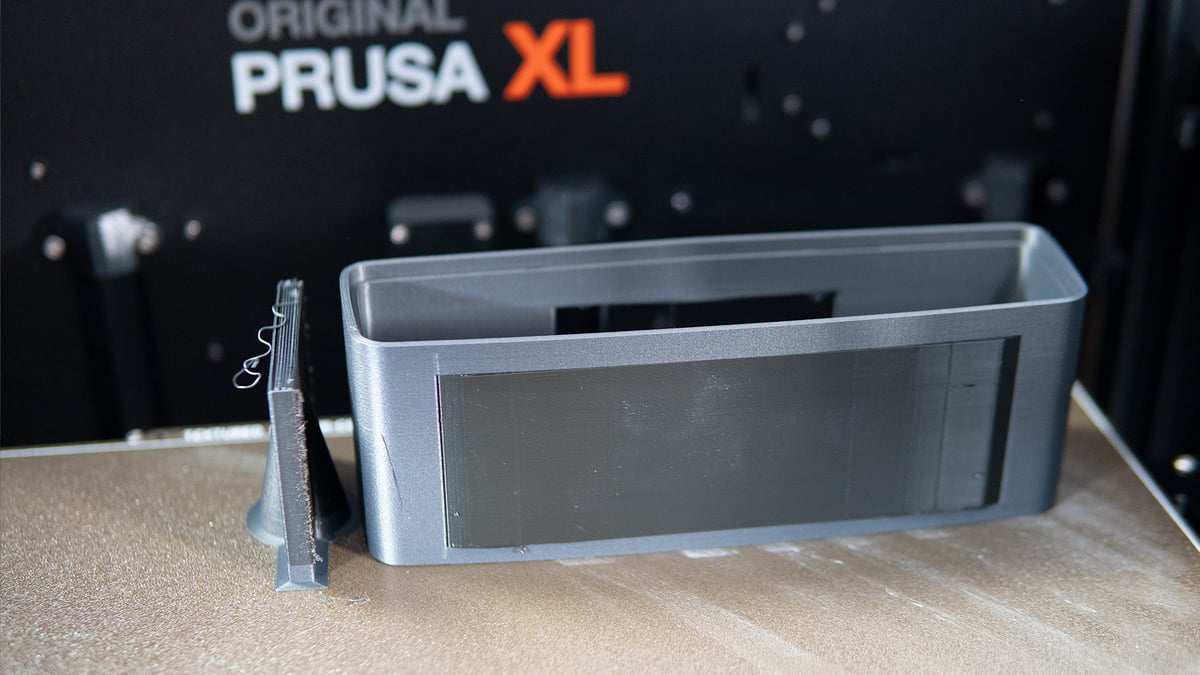
But the waste! What about the waste?!
The nature of the Prusa XL’s design means that it doesn’t need to fully flush the melt zone every time it makes a filament switch like single nozzle systems such as the Bambu Lab AMS (or even Prusa Research’s own MMU3) do. Instead, each active extruder sits, near printing temp, in its dock, ready to be picked up and whisked away for its part of a layer.
This system does not eliminate the need to prime the nozzle for use, however. Multi-material prints with the XL, by default, are accompanied by a slimmed-down prime tower that categorically saves on material wastage in such prints. The value will vary from print to print, particularly from color to color and with the size or amount of objects printed; single-nozzle systems switching from light to dark colors and vice versa will have to flush the material more to eliminate color contamination – no such issue for the XL.
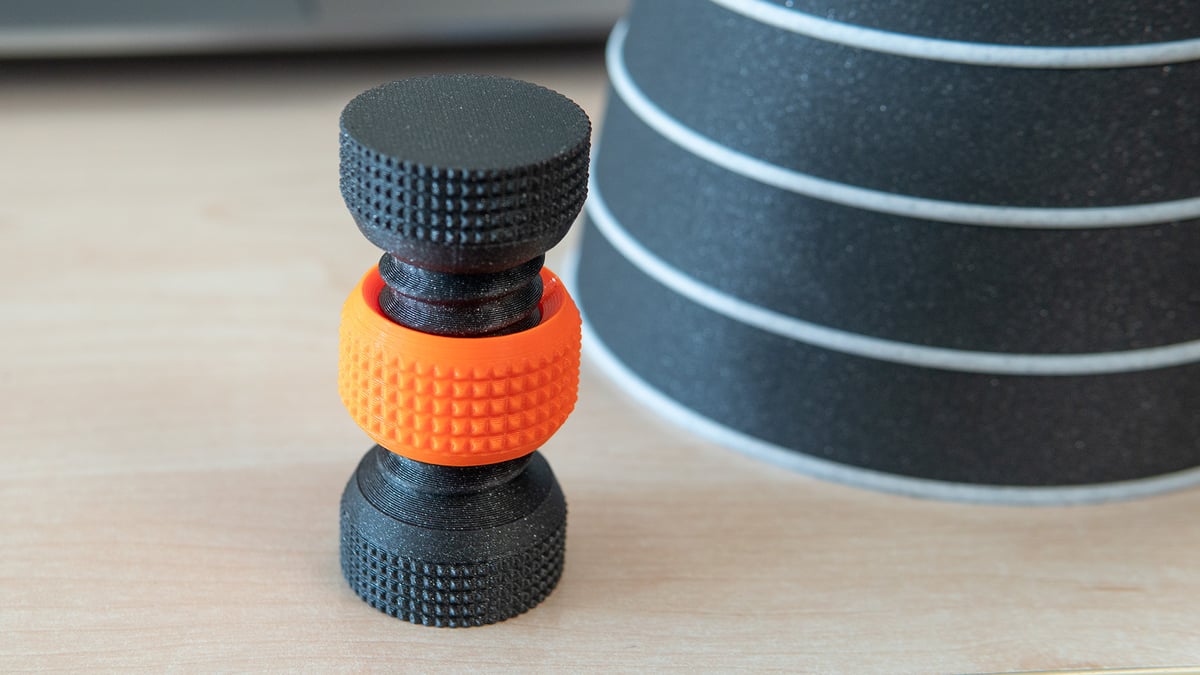
As with any multi-material printer, the XL is most economical when printing batches of the same object, but its efficiency advantage over single-nozzle systems is most apparent in small and single prints with a high number of color or material changes. At the default settings we used, the are unquestionable time and material savings with Prusa’s system.
Beyond this, you can also vary your strategy with regard to purging. Wipe-to-infill and wipe-to-object are two additional waste material options available in PrusaSlicer.
Years in the making, but has it been worth the wait?
First announced in 2019, with the full unveiling and preorders opening in 2021, it took until well into 2023 before the multitool Prusa XL began shipping. Some changes can be tracked over those years, with the XL adjusting to knit better with other projects the company has developed.
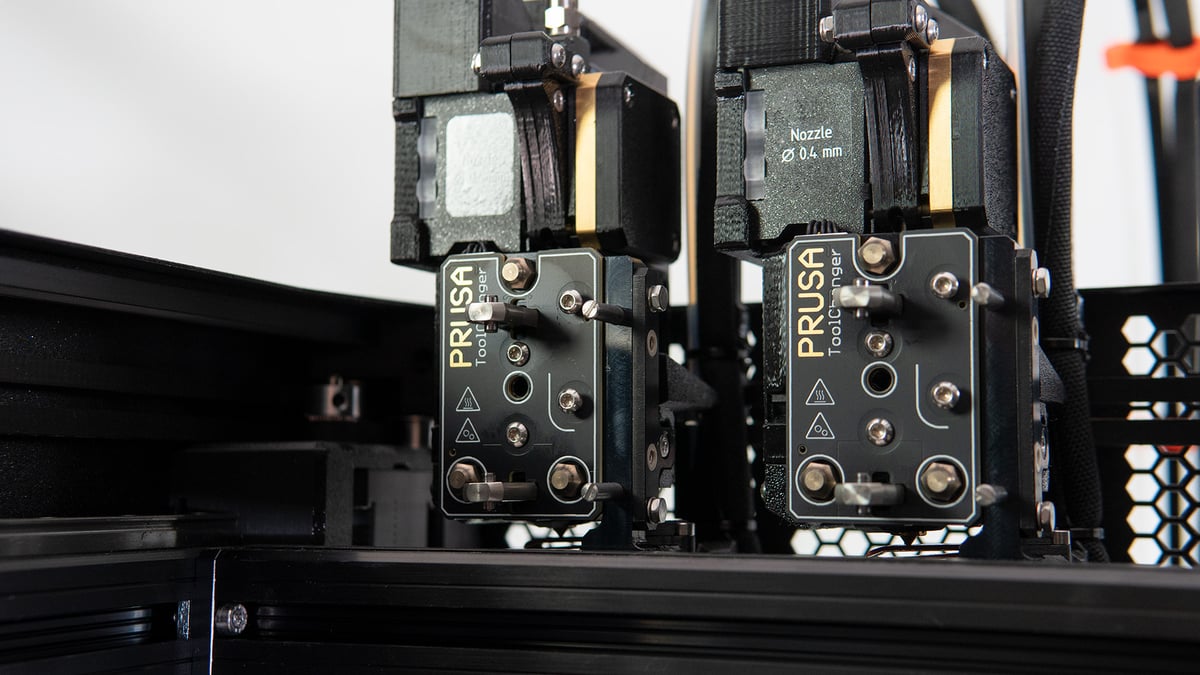
In 2024, the Prusa XL toolchanger – that is to say, the full five-printhead-toting variant of the XL we have used – is a remarkable 3D printer, capable of complex multi-material print jobs that other multi-filament systems are unambiguously incapable of. If you simply must be mixing filament types for your prints, particularly flexibles, then the Prusa XL is it. You get a larger-than-average build volume to work with and relatively speedy prints to boot.
While we certainly have our gripes with the software, we’re not too concerned about them, either. If the recent updates to the Original Prusa MK4 prove anything, it’s that Prusa Research continuously develops and improves its products. The XL has the quality and flexibility in printing already—the rest will surely catch up.
The Original Prusa XL 5x toolchanger is available from Prusa Research, starting at $3,499.
You’ve read that; now read these:
License: The text of "Toolchanger; Game-changer? Hands-On With the Prusa XL" by All3DP is licensed under a Creative Commons Attribution 4.0 International License.
CERTAIN CONTENT THAT APPEARS ON THIS SITE COMES FROM AMAZON. THIS CONTENT IS PROVIDED ‘AS IS’ AND IS SUBJECT TO CHANGE OR REMOVAL AT ANY TIME.
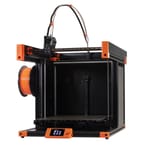
 Stay Informed, Save Big, Make More
Stay Informed, Save Big, Make More